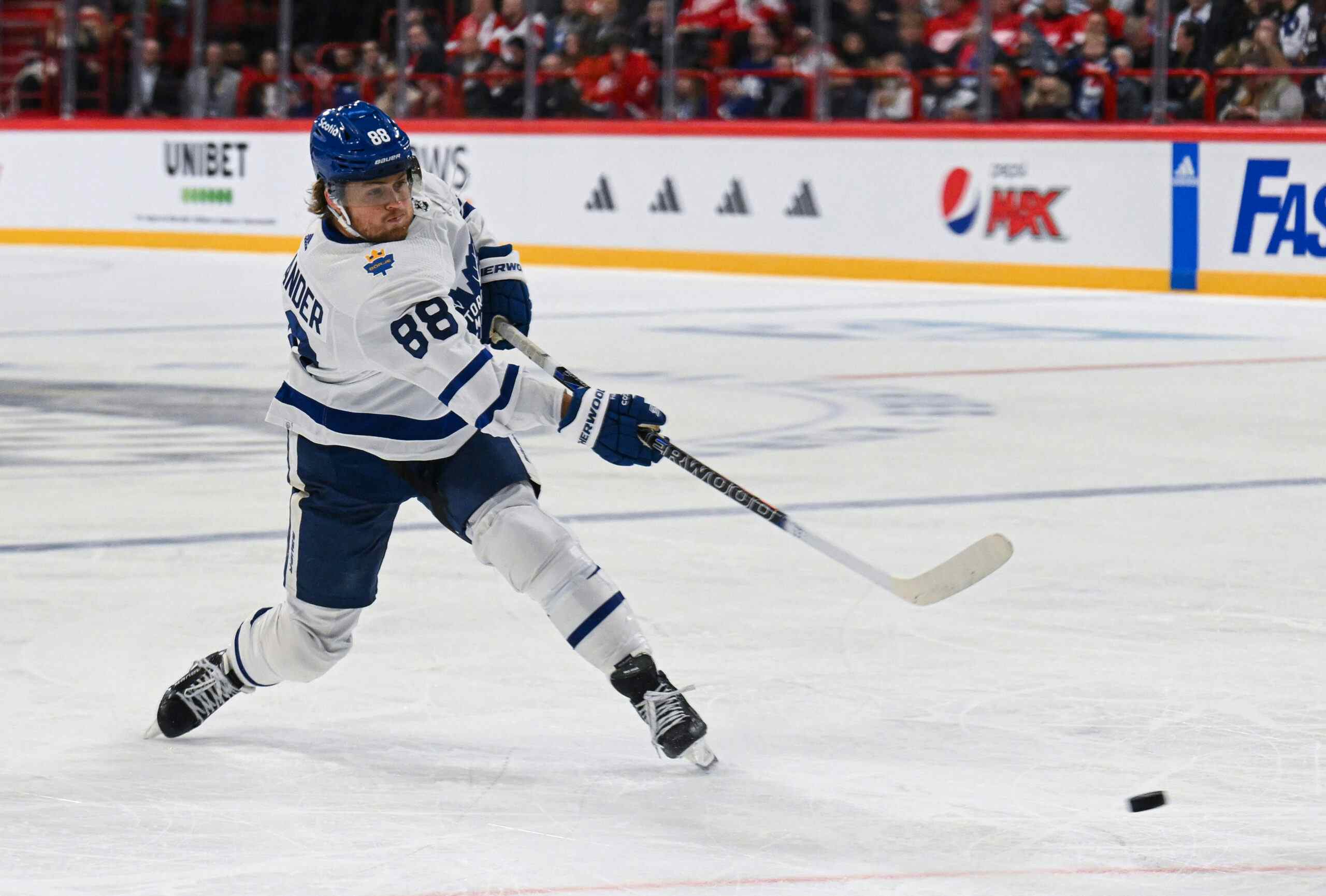The death of truculence: A look at the Leafs’ fourth line
By Cam Charron
11 years ago
There’s been a lot of discussion on various blogs lately, predominantly the Backhand Shelf and our sister site NHL Numbers, on how fourth lines are composed. I thought it might be interesting to look at the composition of the Toronto Maple Leafs, and it appears to be that the thought process behind the team’s fourth line has become more clearly a line where the Leafs want to put good players instead of bad players.
The addition of David Steckel last season showed a clear leap on the part of the Leafs towards making their fourth line more serviceable and less dependent on the grinders and fighters Brian Burke supposedly loves. Just a general look at the Leafs that got the ice-time in years from 2009 through the present shows this shift.
Last season, Mike Brown was the 12th highest forward for the Leafs in ice time, playing 463:50 of ice-time. In 2009, Brad May, the 10th highest forward on the team in ice time, the most of all fourth liners, played 421:02. The Leafs are finding more situations to play their fourth line players in, because they’ve been getting better over a period of a few years.
I broke it down. This counts the average ice time per game of Leaf players who ranged 10th to 12th on the team in that category, making up the fourth line. I also included penalty minutes per 60 among those players:
| Year | Avg. TOI | PIM/60 |
|---|---|---|
| 2012 | 12:10 | 3.2 |
| 2011 | 11:28 | 4.6 |
| 2010 | 9:53 | 11.2 |
| 2009 | 9:41 | 6.1 |
(via NHL.com)
As you can see, the group is not only playing in more situations, but they’re also taking fewer penalties. Last year in all situations, the group included Matthew Lombardi, Matt Frattin and Mike Brown. I would say Frattin and Brown are both replacement-level players, but they aren’t “below” replacement. Lombardi should still have some trade value, and he was an excellent little hockey player before running into a slew of concussions prior to signing with the Nashville Predators and subsequently traded to the Maple Leafs.
So the Leafs fourth liners are playing more. Are they necessarily getting better? When I took the 10th through 12th forwards by even strength ice time alone (this dipped Steckel into this year’s group. He played a lot of shorthanded minutes but not an awful lot at even strength) while also factoring in games played, I decidedly to simply average out advanced measures such as relative Corsi, Quality of Competition, and Offensive Zone Start %. I also averaged out “penalties taken per 60 minutes”:
| Year | TOI/60 | Corsi Rel QoC | Off Zone Start % | Corsi Relative | Pens Taken/60 |
|---|---|---|---|---|---|
| 2012 | 10.15 | 0.032 | 43.9 | -6.2 | 0.5 |
| 2011 | 8.88 | 0.318 | 43.0 | -14.7 | 0.7 |
| 2010 | 8.47 | -0.026 | 52.3 | -12.6 | 1.4 |
| 2009 | 7.61 | -0.494 | 60.0 | -13.8 | 1.9 |
This is optimistic to me. The fourth line is playing more at even strength and are playing tougher minutes. In the last two seasons, the fourth liners played more time against players with a positive relative Corsi than a negative, and also started far more shifts in the defensive end, working as protection for the first and second lines.
Last season, thanks to the addition of Steckel, the group jumped up from being possession slugs to closer to treading water. The other thing to really notice is how the penalties taken meter has dropped. It’s fewer fighters on that line, fewer hackers and slashers and grinders subject to roughing penalties, and hockey players who are closer to hockey players.


Jay McClement and Леонид Комаров
What does this mean going forward? I’ve been in favour of a fourth line that brings out two Toronto centremen, the other being Jay McClement, onto the unit with Steckel and possibly playing Leo Komarov who was a top-six player in Dynamo Moscow during their Gargarin Cup campaign last season. He scored 11 goals, second on the club, and was recognized as a pest by teammates, opponents and KHL managers alike.
One thing he’d have to do is cut down on the number of penalties he takes to work in this line. Currently, the lockout gives Komarov an opportunity to adjust to the North American ice surface. Despite this, our pal Gus Katsaros has already made a Darcy Tucker comparison, although isn’t sure if Komarov is more than a replacement-level player at this point.
Still, there’s that log jam in the forward unit, particularly with the addition of James van Riemsdyk and the presumed NHL jump of Nazem Kadri that’s going to knock some guys back in the depth chart. Steckel and McClement are good enough NHL players to play on a third line somewhere, but if the Leafs can exploit their vast resources up front, I think they can create four solid lines here if they properly use Nik Kulemin and van Riemsdyk in the lineup.
The funny thing is that the best thing for the Leafs third and fourth lines won’t be the addition of a fourth liner in the offseason, but that it’ll come from additions higher up on the depth chart, that knocks everybody back. Sure, Matt Frattin isn’t an NHL top-six player, but you could do a whole lot worse with him flanking Steckel on your fourth line. We know you can do a whole lot worse: The three years before Steckel, they were.
Recent articles from Cam Charron





